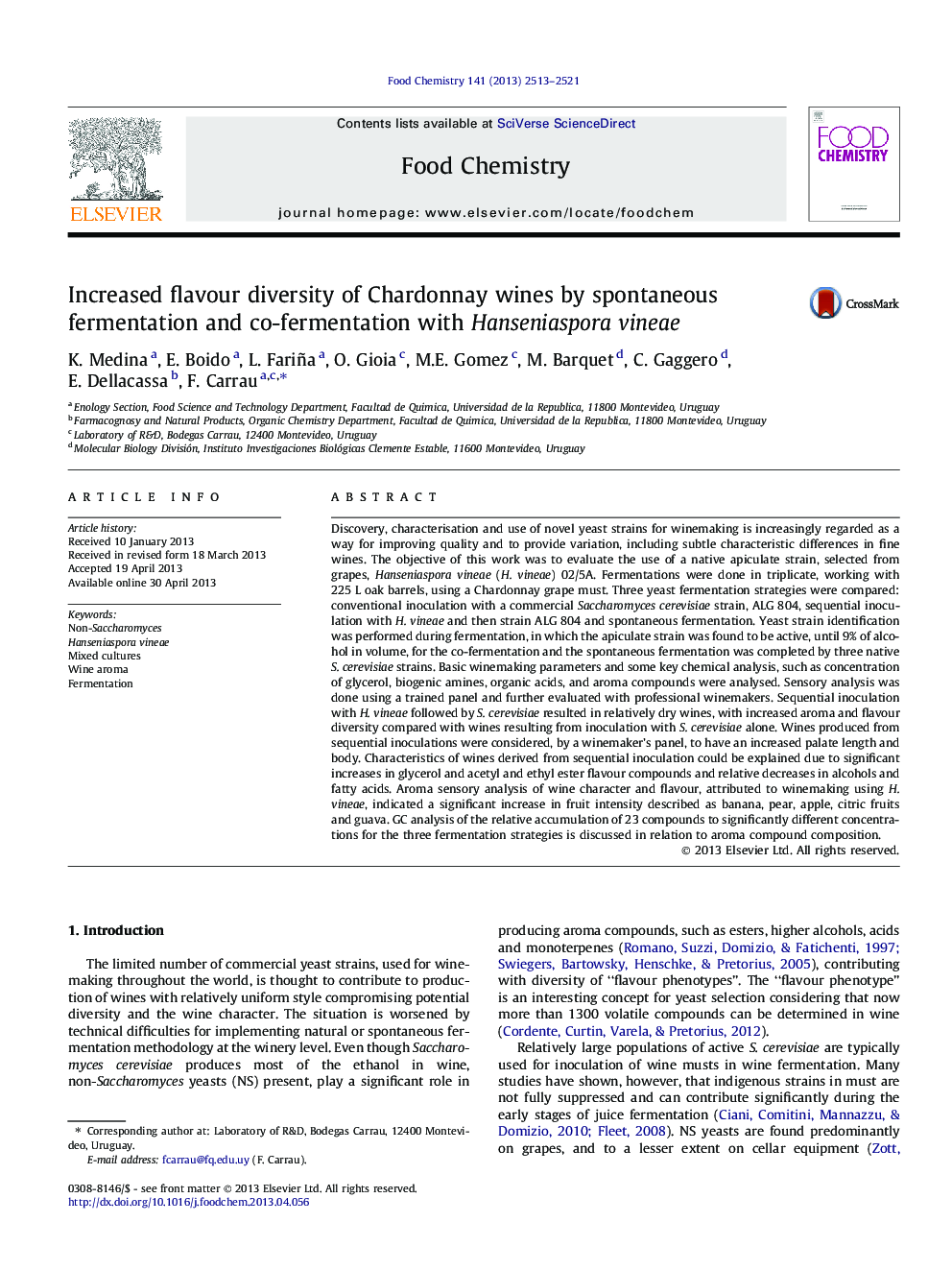| کد مقاله | کد نشریه | سال انتشار | مقاله انگلیسی | نسخه تمام متن |
|---|---|---|---|---|
| 10540268 | 963403 | 2013 | 9 صفحه PDF | دانلود رایگان |
عنوان انگلیسی مقاله ISI
Increased flavour diversity of Chardonnay wines by spontaneous fermentation and co-fermentation with Hanseniaspora vineae
دانلود مقاله + سفارش ترجمه
دانلود مقاله ISI انگلیسی
رایگان برای ایرانیان
کلمات کلیدی
موضوعات مرتبط
مهندسی و علوم پایه
شیمی
شیمی آنالیزی یا شیمی تجزیه
پیش نمایش صفحه اول مقاله

چکیده انگلیسی
Discovery, characterisation and use of novel yeast strains for winemaking is increasingly regarded as a way for improving quality and to provide variation, including subtle characteristic differences in fine wines. The objective of this work was to evaluate the use of a native apiculate strain, selected from grapes, Hanseniaspora vineae (H. vineae) 02/5A. Fermentations were done in triplicate, working with 225Â L oak barrels, using a Chardonnay grape must. Three yeast fermentation strategies were compared: conventional inoculation with a commercial Saccharomyces cerevisiae strain, ALG 804, sequential inoculation with H. vineae and then strain ALG 804 and spontaneous fermentation. Yeast strain identification was performed during fermentation, in which the apiculate strain was found to be active, until 9% of alcohol in volume, for the co-fermentation and the spontaneous fermentation was completed by three native S. cerevisiae strains. Basic winemaking parameters and some key chemical analysis, such as concentration of glycerol, biogenic amines, organic acids, and aroma compounds were analysed. Sensory analysis was done using a trained panel and further evaluated with professional winemakers. Sequential inoculation with H. vineae followed by S. cerevisiae resulted in relatively dry wines, with increased aroma and flavour diversity compared with wines resulting from inoculation with S. cerevisiae alone. Wines produced from sequential inoculations were considered, by a winemaker's panel, to have an increased palate length and body. Characteristics of wines derived from sequential inoculation could be explained due to significant increases in glycerol and acetyl and ethyl ester flavour compounds and relative decreases in alcohols and fatty acids. Aroma sensory analysis of wine character and flavour, attributed to winemaking using H. vineae, indicated a significant increase in fruit intensity described as banana, pear, apple, citric fruits and guava. GC analysis of the relative accumulation of 23 compounds to significantly different concentrations for the three fermentation strategies is discussed in relation to aroma compound composition.
ناشر
Database: Elsevier - ScienceDirect (ساینس دایرکت)
Journal: Food Chemistry - Volume 141, Issue 3, 1 December 2013, Pages 2513-2521
Journal: Food Chemistry - Volume 141, Issue 3, 1 December 2013, Pages 2513-2521
نویسندگان
K. Medina, E. Boido, L. Fariña, O. Gioia, M.E. Gomez, M. Barquet, C. Gaggero, E. Dellacassa, F. Carrau,